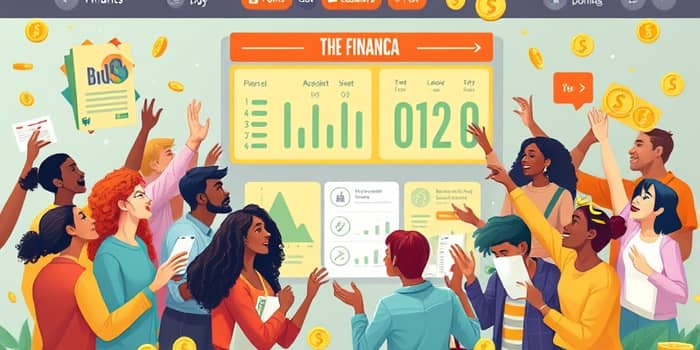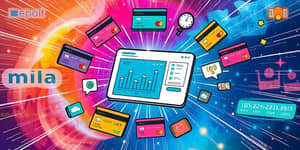Financial education often feels overwhelming, but what if learning about money could be as engaging as playing your favorite game? Today’s innovative platforms harness familiar game mechanics to transform complex financial concepts into an immersive learning adventure.
By blending the best of interactive design and educational content, gamified finance apps break down barriers to financial literacy. They cater to learners of all ages—children, students, young adults, and seasoned professionals—and make every lesson feel like a rewarding challenge.
Understanding Financial Literacy Gamification
At its core, financial literacy gamification is the integration of playful elements—points, badges, levels, and rewards—into educational content. Instead of reading chapters of theory, users earn incentives for completing modules and applying concepts.
These platforms use game mechanics like points and badges to boost engagement. Leaderboards foster friendly competition, progress bars visualize milestones, and simulated challenges mirror real-world scenarios.
Key Features of the App
Leading financial gamification apps share several standout features designed to sustain motivation and deliver actionable insights.
- Bite-sized, interactive modules that fit into busy schedules
- Simulated budgets, investment simulations, and debt management games
- Points, badges, and real-world rewards such as gift cards or fractional shares
- Adaptive lessons powered by AI to match individual learning pacing
- Social components: group challenges, peer leaderboards, and referral bonuses
For example, Zogo offers over 300 mini-lessons aligned with national curricula, while NGPF’s simulations let students build budgets and experience market fluctuations. Apps like Acorns and Stash add gamified investing by rounding up purchases and rewarding users with fractional shares.
Driving Motivation and Engagement
Maintaining learner interest is critical. Gamified platforms employ instant feedback fosters learning momentum, giving users a sense of accomplishment after each task. Progress tracking, milestone celebrations, and streaks reinforce consistency.
Leaderboards and badges introduce a healthy dose of competition. Users compare achievements, share tips, and celebrate collective wins. These social elements make financial management less isolating and more communal.
Moreover, the use of a virtual economy—earnable in-app coins or currencies—drives home concepts like saving before spending and diversifying investments. By practicing in a risk-free environment, learners build confidence before tackling real-life financial decisions.
Benefits of Gamified Financial Learning
Gamification has measurable impacts on user behavior and educational outcomes. Studies show it can boost engagement by 48% and foster positive financial habits in nearly 68% of participants.
- Accessibility: short, user-friendly lessons suit diverse learning styles and time constraints
- Motivation: Reward structures make challenging topics feel achievable
- Retention: Interactive tasks and repetition strengthen memory retention
- Real-world readiness: Simulations prepare users for budgeting, investing, and debt management
- Behavioral change: Instant reinforcement encourages lasting positive habits
By turning financial tasks into compelling quests, gamified apps reduce anxiety around money and encourage users to take proactive steps toward their goals.
Innovations and Future Trends
The frontier of financial gamification blends cutting-edge AI, collaborative learning, and cross-industry expansion. Adaptive challenges respond dynamically to individual progress, tailoring difficulty levels and content focus in real time.
Collaborative features—shared savings goals, group investing challenges, and peer coaching—leverage social accountability to boost success rates. Even non-financial apps adopt gamified finance elements, integrating budgets and rewards into lifestyle and wellness platforms.
Looking ahead, augmented reality experiences may let users visualize investments in three-dimensional simulations, while blockchain-based systems could introduce transparent token economies for learner incentives.
Best Practices for Implementation
Designing an effective gamified financial app requires balancing engagement with educational integrity. Developers and educators should consider:
- Setting clear, measurable learning objectives and tracking progress
- Aligning content with age-appropriate standards and real-world relevance
- Rewarding actual financial behaviors—not just in-app achievements
- Ensuring user privacy and regulatory compliance for financial data
- Regularly updating challenges and content to maintain novelty
When these practices are in place, gamification becomes a powerful tool for lasting behavior change rather than a gimmick.
Conclusion: Empowering Financial Futures
Financial gamification turns what once felt like dry theory into an engaging journey. By rewarding progress, simulating real decisions, and fostering community, these apps empower users to build confidence and competence.
Whether you’re saving for a milestone, investing your first dollars, or planning debt reduction, gamified learning offers empowering journeys toward financial well-being. Embrace the adventure, earn rewards, and watch your financial skills level up—one challenge at a time.
References
- https://www.strikingly.com/blog/posts/top-6-interactive-financial-literacy-platforms-2023
- https://survicate.com/blog/gamification-apps/
- https://www.fitzsimonscu.com/blog/financial-literacy-games-for-children-and-adults/
- https://www.clearmountain.bank/community/community-engagement/zogo
- https://www.nudgenow.com/blogs/gamification-in-banking-apps
- https://www.miquido.com/blog/gamification-in-financial-services/
- https://www.letsnurture.com/blog/top-8-gamification-strategies-for-educational-apps-in-2025.html
- https://pollen.vc/blog/mobile-gamification/










